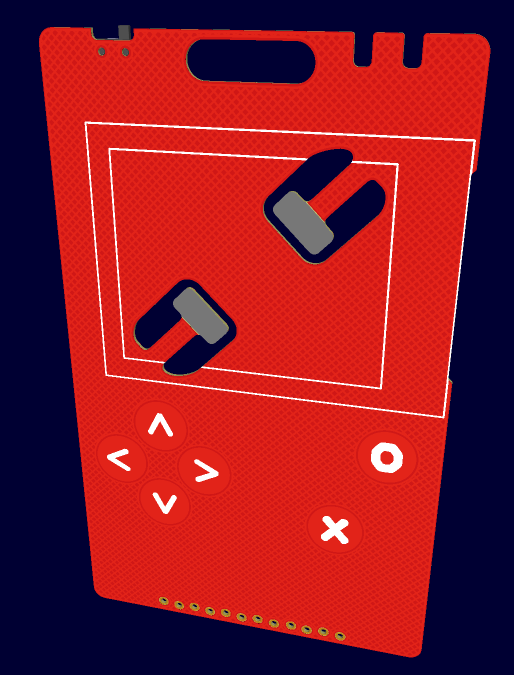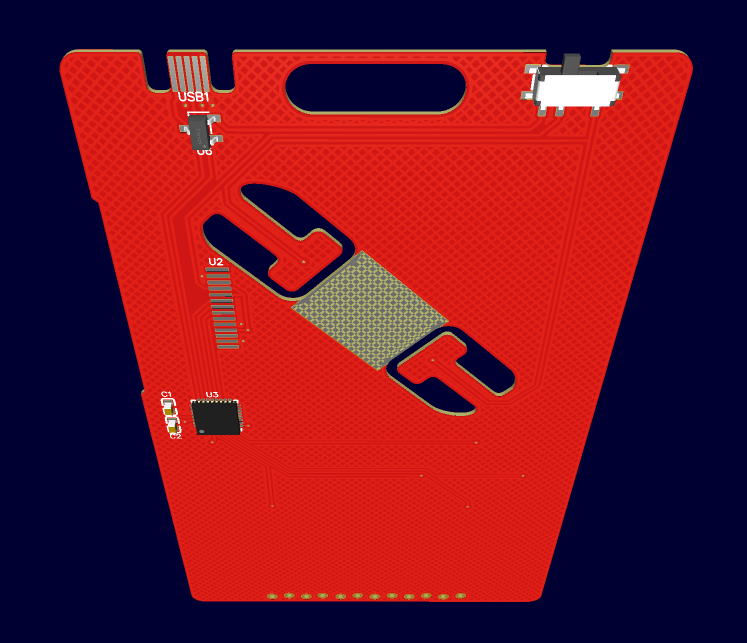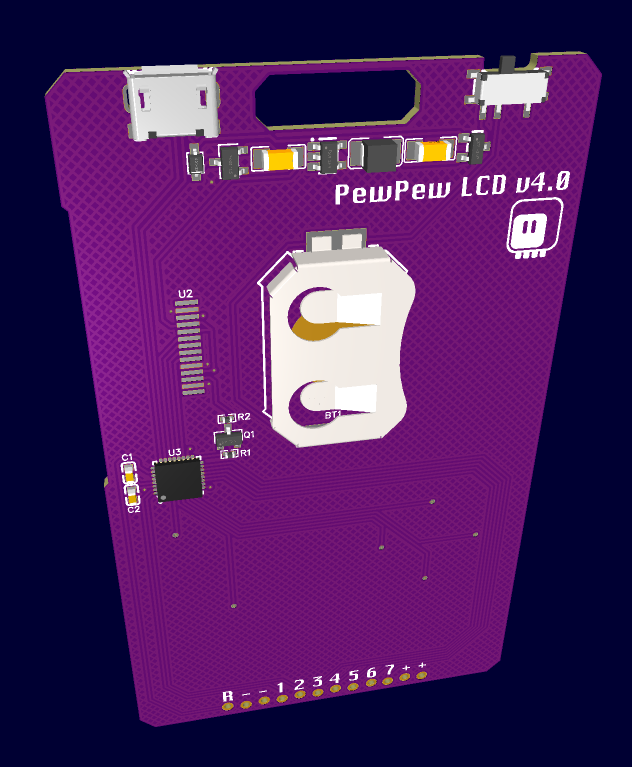A bunch of sleepless nights, and I have designed a version of PewPew with that ST7735 display from LCSC in EasyEDA, to see how that single-click assembly thing would work for it. I was very careful to use the parts from the basic parts list as much as possible, so as to not incur extra costs for loading new parts into the PnP machines. It looks like this:

Of course all the parts are on the back, including the long row of parts that is the power supply, including the LDO regulator for handling the USB 5V, and a boost converter for the battery. Unfortunately I didn't take a screenshot of the finished board from the back, so here it is without the boost circuit.

There is also plenty of space for documenting the pins and adding whatever PCB art I decide on, but for a prototype that is enough. So I clicked the magical one-click button, did all the additional clicks to generate the BOM and PNP files that for some reason the one-click button doesn't handle, and was presented for a quote for assembling 5 units: a little bit over $50. And that is without the SAMD21, which happens to have a "shortfall", and without the display, that doesn't even appear in the parts search, despite the fact that you can find it on LCSC without problems. Add to this the shipping costs and the missing parts (which happen to be the two most expensive ones), and you can easily expect $20 a piece. That's not what I expected, so I looked closely at the breakdown of fees, and turns out I'd have to pay extra $25 "setup fee" for the fact that the PCB is 0.6mm thick instead of the regular 1.6mm thickness. It would also have to be green, because all other colors in that thickness are ridiculously expensive.
In hindsight, this isn't surprising. If they have to change the settings of the whole production line just to churn out those 5 boards, it's going to take time and work from their engineers. The good thing is that it's a one-time fee, so it would have much less of an impact on the final price if I ordered, say, 100 units. But I want people to be able to order just a dozen units for a workshop, so this is definitely sub-optimal.
What can I do? What if I stopped trying to be clever with the battery holder and the USB socket, and used regular parts like everyone else, and regular thickness of the PCB? Those parts cost literal cents, after all. Let's see:

I also simplified the board outline, while I was at it, in the vain hope that it would make the previews on the JLCPCB website work, but it didn't. I guess their engineers are busy with other things. In any case, this time it was just around $30 for 5 units, which sounds much more reasonable, until you remember that the boards are missing the two most expensive and hardest to solder parts, the MCU and the display. And this time the largest fee is the "extra components" fee, for using parts that aren't the basic parts list. Because while the USB socket and battery holder indeed only cost cents, they are not "basic parts", so you pay an additional fee (much higher than the price of the part) just for loading them into the PnP. I feel like I can't win this.
So the plan right now is to focus on the other problem I have identified in the previous log, maybe get a new revision of the nokia display prototype into EasyEDA if I can't sleep again, and try to see if some fab would be interested to carry those boards in their shop. Because the only way to get them cheap is to make a lot of them at once. But that will have to wait until the SAMD21 is back in stock.
 deʃhipu
deʃhipu
Discussions
Become a Hackaday.io Member
Create an account to leave a comment. Already have an account? Log In.